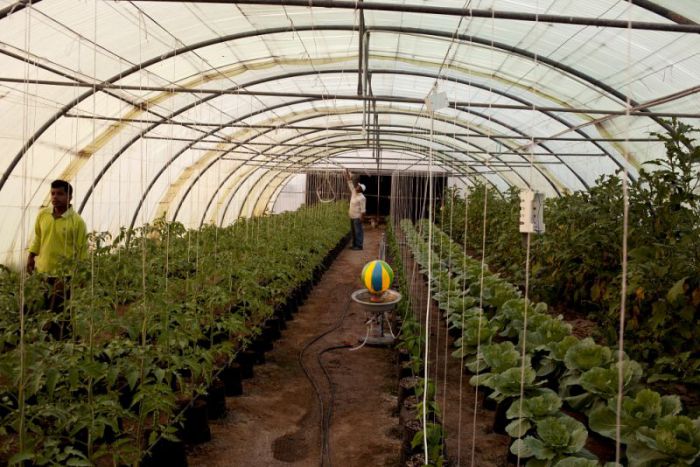By: Ian Randall
Send to a friend
The details you provide on this page will not be used to send unsolicited email, and will not be sold to a 3rd party. See privacy policy.
Researchers in Australia are seeking to build a prototype ‘Bubble-Greenhouse’ that could provide remote, arid places with a low-tech, low-maintenance way to turn salt water into fresh water to grow food.
The engineers from Murdoch University, who published their study last month in the journal Desalination, estimate that a 150 square metre Bubble-Greenhouse could produce around eight cubic metres of fresh water and up to 30 kilograms of crops each day. The sealed structure would protect crops from insects and disease, while the technology should be relatively simple to implement and use in isolated areas, they say.
“We believe that the concept is applicable to arid regions worldwide.”
Mario Schmack, Murdoch University
The Bubble-Greenhouse idea develops an existing seawater greenhouse concept, which uses the evaporation and condensation of salt water to produce fresh water for irrigation and to create a cool, humid environment inside a greenhouse, meaning crops need less water to grow.
The new approach moves the evaporation and condensation processes outside the greenhouse. Inside two water-filled ‘bubble columns’, streams of thousands of tiny bubbles create a large surface for water to evaporate or condense. A unique property of seawater prevents the small bubbles joining to form big bubbles, thus maintaining a large surface area.
According to Mario Schmack, one author of the paper, unlike the seawater greenhouse that operates at the ambient temperature, the Bubble-Greenhouse’s separated evaporators/condensers allow the use of higher temperatures. “Therefore, much more water vapour can be held in that hotter air stream,” he says.
Not only does this make the process faster and more efficient, Schmack says, but the bubble process prevents salt build-up within the evaporation chamber, reducing the need for maintenance.
“We believe that the concept is applicable to arid regions worldwide, where the social benefits and the simplicity of the concept will drive sustainable development of remote people,” says Schmack.
Emily Tow, a mechanical engineer at the Massachusetts Institute of Technology, United States, who was not involved in the study, says: “The desalination system employs bubble columns, which are more compact and inexpensive than conventional humidifiers/dehumidifiers because of the large area for phase change and high heat transfer coefficients.”
But Tow warns that the estimated cost of US$10 for every 1,000 kilograms of water produced — which might be enough to grow up to 10 kilograms of food — means the concept may be uneconomical for growing staple crops. Other desalinisation techniques, such as solar-powered reverse osmosis, may be more efficient, she says.
But Schmack says the Bubble-Greenhouse concept might be useful for isolated communities because its simplicity would make it easy for local people to implement. With their preliminary study complete, the researchers are now looking to work with industry partners in Western Australia to develop a working prototype.
This article was originally published on the Middle-East & North Africa edition.
References
Mario Schmack and others The Bubble-Greenhouse: A holistic sustainable approach to small-scale water desalination in remote regions (Desalinisation, 1 June 2015)














